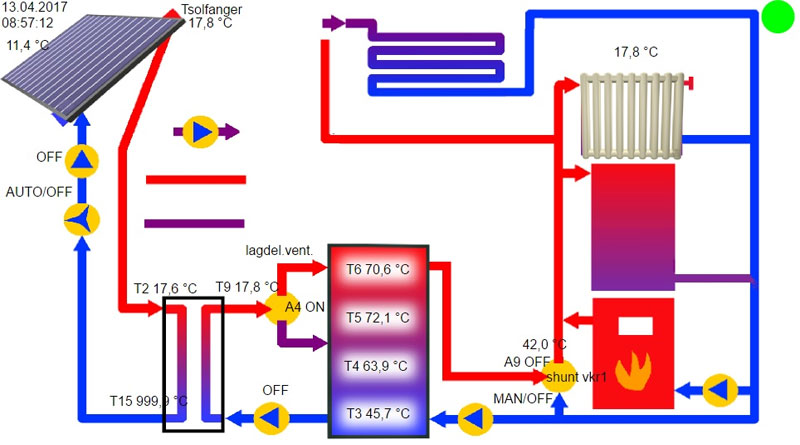How do solar collectors work?
Solar collectors are essentially composed of a flat box made up of a transparent cover, an insulated back plate and tubes containing a coolant. They work on the principle of the greenhouse effect – solar radiation that comes into contact with the surface of the collector is transmitted through it and trapped inside the box. The coolant sealed inside the tubes warms up, allowing the heat to be used for various purposes, once the fluid has been moved to a storage tank by a circulation system. Usually, these tubes are made from copper and are situated over a back plate which has been painted black. This helps more solar radiation be collected. Insulation is placed on the back and sides of the collector to prevent heat from escaping.
Generally, these solar heat collectors are used to heat water. Solar water heating systems can be used in place of conventional home water heaters or to provide heat to homes and buildings in the same way as a conventional radiator. There are two main types of solar water heating systems – closed loop and open loop. Open loop systems use water as the coolant, which circulates between the storage tank and the solar collectors.
If the temperature is likely to drop below a certain level, it’s necessary to use a closed loop system. The major difference between this type of system and the open loop type is that the water is replaced by a coolant that won’t freeze while it’s in the solar collectors. This coolant is often oil or refrigerant. Closed loop systems are more expensive than open loop ones and it’s important to make sure that the water doesn’t become contaminated with other fluids. Generally, the energy captured by the coolant in the solar heat collectors is transferred to the water via a heat exchanger to prevent this.
Collectors can be an important component of a direct solar heating application, or they can help heat water that then flows through radiators. In some cases, the water that has already been heated by the collector is then further heated by a boiler then circulated through radiators to provide heating.
It’s also possible to use solar energy collectors with air distribution systems. This works in a similar way to a system distributing heat with hot water, but an air duct and blower are included. The air is passed over a coil when the temperature in the storage tank is high enough carrying heat through the building. If there isn’t enough heat stored in the tank to make a difference in the temperature of the heating space, then the air will not be moved over the coil. Solar collectors aren’t always enough to heat a house by themselves. However, they can make a contribution to the heating of a home or other building, allowing conventional systems to use fewer resources and do less work. In the long run, this saves a lolong run, this saves a lot of energy and can even help you save money, no matter which strategy you use.

